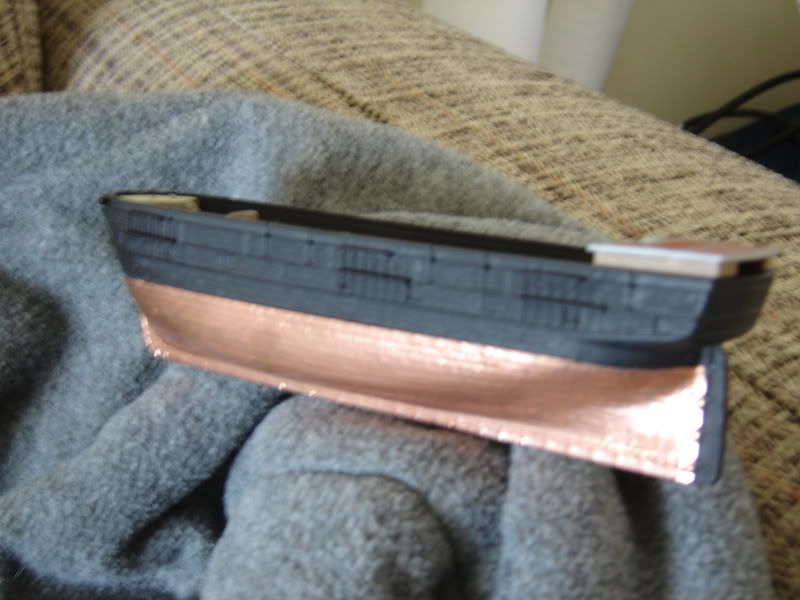I bought this 'New Bedford Whaler' kit by Academy (ex Pyro I understand) with the intention of having a first dive into plastic shipbuilding before I go onto something a little more complicated for an intended model railroad diorama.
I bought a cheap roll (£1) of copper tape 3.5mm wide, and 'planked' the lower hull with it as best as possible. Even though each line of tape is much wider than a 1:200 individual plate of copper would be, the effect is quite pleasing. After 1 day the tape has tarnished nicely , and I would imagine a week or so will have it showing a nice patina. In other modelling applications I have found that it is wise to wait for it to tarnish as much as you need it to, and then seal with a spray of mat acrylic varnish to prevent further tarnishing.

I tried to follow the method you would ue to plank a real hull (tapering, etc) in order to keep the visible overlap lines flowing along the hull, but any pointers or a word from the experts who have tried this technique would be marvellous. This is my first model ship kit, so I just thought I would post here to try and provoke a bit of a debate about the use of real copper for model ships hulls!
Next job(seeing as all the deck detail is moulded on)- is working out how to rig it- th plastic shrouds look awful!
Will